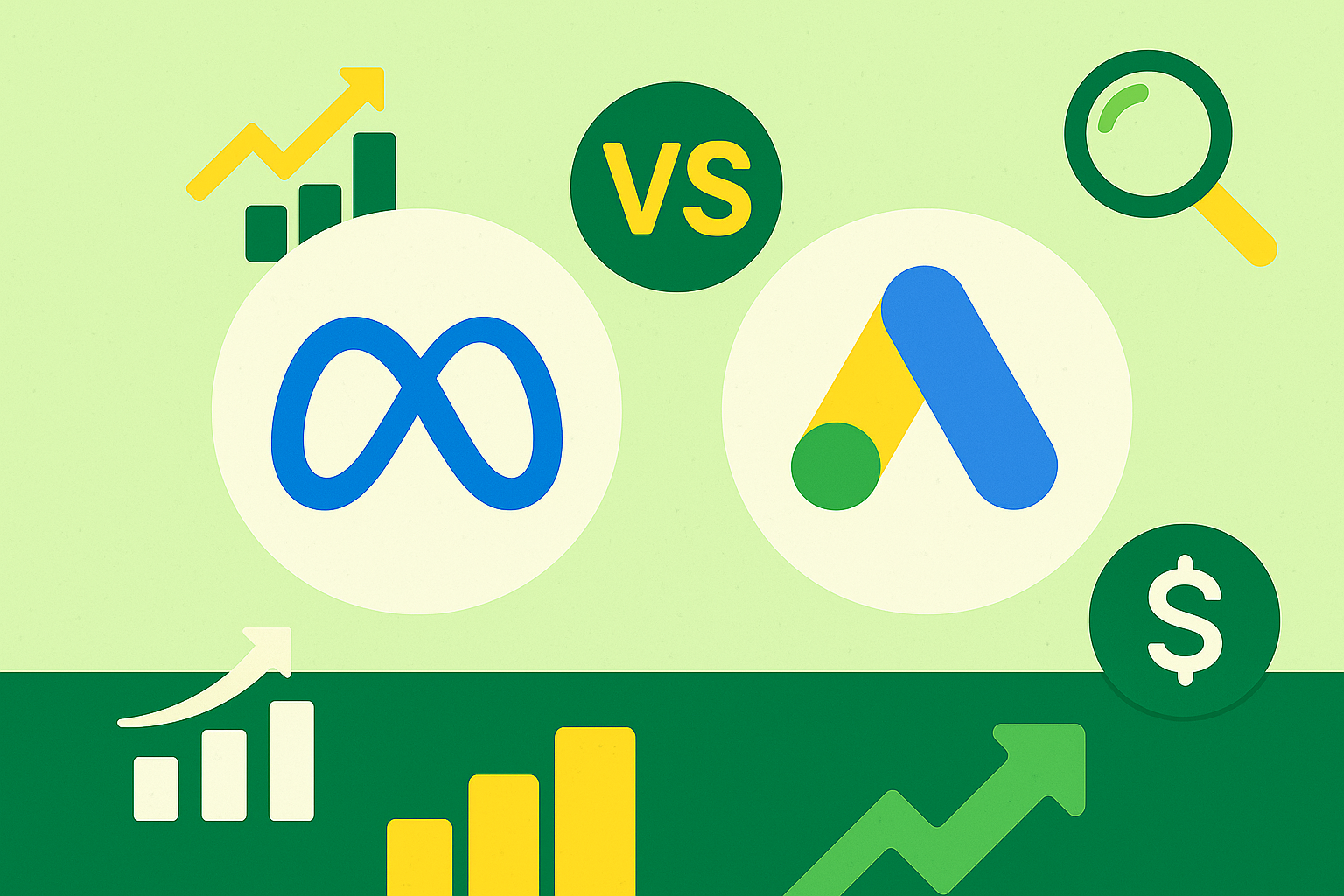The 2025 Paid Media Dilemma: Google or Meta?
If you’re a small to midsize brand with a performance budget, you’ve likely asked yourself the classic question:
Do we scale with Google or Meta Ads first?
The truth in 2025?
You need both — but how and when you use each depends on goals, offer type, and stage of growth.
At SnuggleMud, we’ve spent the last year managing campaigns for brands spending between $2K–$50K/month, and the patterns are clear: each platform plays a critical — but very different — role in performance marketing.
Google Ads: High Intent, Fast ROI
If your goal is qualified leads or purchase-ready traffic, Google is still king. Why? Because you’re meeting users at the exact moment they’re searching for a solution.
Case Study: Snoqualmie Casino
Through Google Ads, we drove huge volumes of search and conversion activity, including:
- Gaming inquiries
- Hotel bookings
- Entertainment ticket sales
- Dining reservations
We focused on high-intent keywords and conversion-specific landing pages. The result? Tens of thousands of highly qualified clicks, with strong ROI across multiple verticals inside the same business.
Meta Ads: Demand Generation + Storytelling at Scale
Where Google captures intent, Meta creates it. Meta Ads (Facebook + Instagram) are essential for building brand affinity, nurturing cold audiences, and retargeting with more emotion than a text ad can offer.
We’ve seen Meta thrive in:
- Product drops and promotions
- Visual services (weddings, beauty, events)
- Building top-of-funnel awareness when brand equity is key
But for cold conversion without strong creative? Expect higher CPAs and slower returns.
When Both Platforms Win Together
Some of our best-performing accounts are omnichannel — using Meta to generate demand and Google to harvest it. This creates a powerful loop:
- Prospect on Meta with creative that speaks to pain points
- Retarget users across both platforms
- Capture conversions via high-intent search when users Google your brand
When done right, the two platforms build compounding efficiency — not competition.
Final Thought: Don’t Ask “Which One First?” — Ask “What’s the Right Role for Each?”
In 2025, the better question is:
How should we structure our media mix to get the most out of each platform?
If you’re trying to stretch $5K–$50K/month in media, the answer isn’t choosing sides — it’s architecting your funnel.
Want help building a strategy tailored to your goals and budget? Let’s connect — we’ll show you how we’ve scaled brands just like yours.


